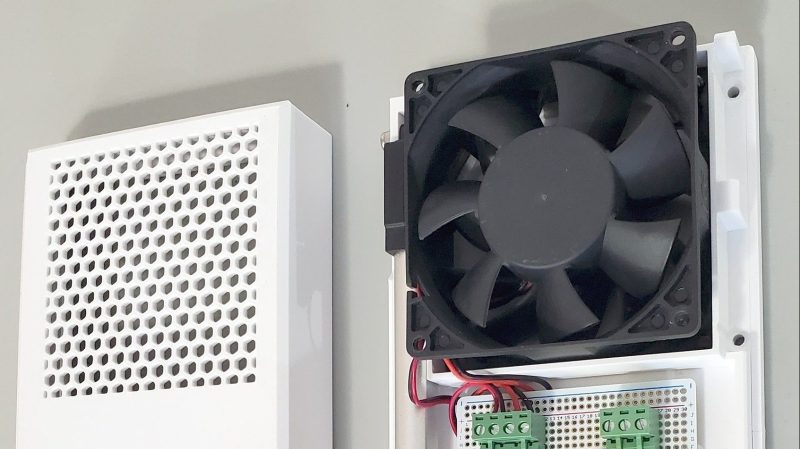Ventilation fans are useful for clearing stuffy or stale air out of a space. However, they also tend to act as a gaping hole into said space. In the case of caravans and RVs, an open ventilation fan can be terrible for keeping the interior space warm, quiet, and free from dust. “Blast doors” or fan blocks are a common way to solve this problem. [Raphtronic] whipped up a duly-equipped ventilation fan to do just that.
The solution was to create a fan setup with a custom fan holder and a sliding door to block airflow when necessary. [Raphtronic] designed a fan frame for this purpose using parts 3D printed in ASA plastic. This material was chosen such that they could readily withstand the 50 C (120 F) temperatures typical in his Ford Transit camper during the summer. A simple 12 V ventilation fan was then fitted to the frame, along with a sliding door controlled by a 12 V linear actuator.
The mode of operation is simple. A DPDT switch controls the linear actuator. Flipped one way, the linear actuator is fed 12 V in such a polarity as to move it to open the fan door. In this mode, 12 volts is also supplied to the fan to start ventilation. When the switch is flipped the other way, the actuator moves to the closed position, and a diode in the circuit stops the fan spinning backwards. As a bonus, limit switches are built into the linear actuator, so there’s no need for any microcontrollers, “off” switch positions, or additional wiring.
It’s a tidy solution to the problem of ventilating a camper in a clean and effective manner. Files are on GitHub for those wishing to build their own. We’ve seen some great work in this area before, like this off-grid van project that made excellent use of 3D scanning during the build process. If you’ve designed and built your own nifty camping gear, don’t hesitate to drop us a line!

















All that work and words and no picture of the final installation?
I don’t get whether this fan is to go on the van itself or in the (supposed garage?) the van is parked in.
Sorry, wish I could have added a pic of the fan mounted on the rear pillar in the van (exhaust via a plastic flex pipe through the existing Transit’s pillar/underchassis holes). But everything in the van has been pulled down for painting. Will add a pic in a few months when all the walls and cabinetry is back up.
In a few words…
This seems neat. My usual expectation is that the most reliable thing is to have a fan with good static pressure and flow rate per cross section – e.g. a cheap centrifugal one like we used to throw into empty PCI slots, along with a duct with a level of innate diodicity – such as a flap that is pushed up by the air in the simple case, or a little wind sock that is inflated by that fan as it works. That’s let down if anything funnels air into the structure and out the exhaust in spite of the fan being off. In many cases that’s unlikely, since the exhaust normally pulls replacement air into the structure from all directions but the wind couldn’t push from all directions. So if your actuators and everything are good enough to last just as long as a good fan – which they seem like they can be or are – that’d still get you even better sealing, but I wonder if it’s so good as to block humidity ingress too? Maybe with a sliding seal I didn’t see?
“Diodicity”, love it ! Great term. Electronic concept applied to mechanical stuff… works well !
Totally agree with your points. I would have gone with a centrifugal blower (like in the van’s shower space) and a flap (a-la clothes dryer) if there had been enough space at the back of the van. Would have been much simpler, and blowers work much better than fans when the exhaust is restricted like here.
Unfortunately the exhaust goes into the back pillar via a small-ish 2.5×4″ hole, into a flex plastic downspout routed blind inside the pillar and then inside an underchasis cross-member, before exiting via a 2×4″ hole. There was no space for a flap, nor for a bulkier blower as the space in the van’s ‘garage’ is pretty limited (sliding storage tray barely clearing the fan / blast gate.
Sorry , no pics yet as I have not been able to set foot for the last month in the detached garage where the van is parked. -20oF (-28oC) is way too cold for my bones :-)
I first saw it used to describe the ratio of the backward versus forward flow resistance of some tesla valves, and I liked the term.
Sounds like the space is both tight and awkward; so with that in mind the compactness you achieved is pretty neat.